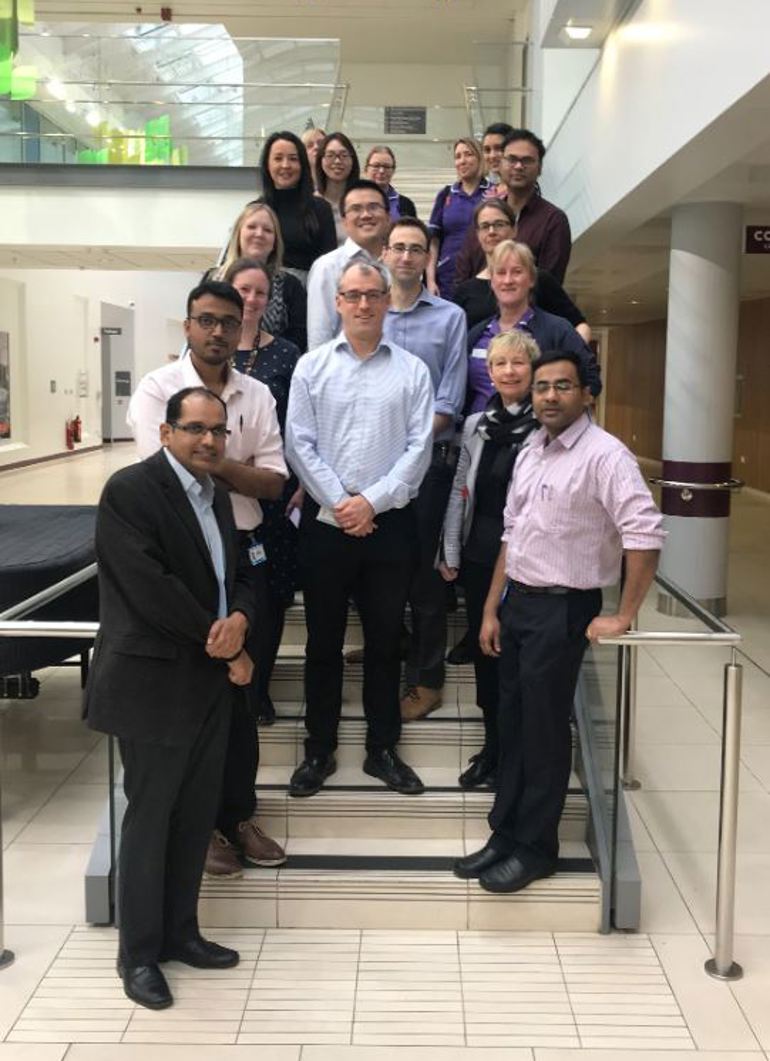Welcome to Respiratory Futures Dr Martyn Kennedy, could you give us some background about the Leeds virtual lung nodule service please? The service started in August 2016. Lung nodules are common incidental findings on chest imaging. They are present on approximately 25% of chest CT scans. They are asymptomatic, and are usually harmless. In a small proportion of patients (approximately 1-2% for small nodules), they will grow and are subsequently diagnosed as lung cancers. The number of CT scans performed has been rising at about 10% per year, and so an increasing number of patients are being diagnosed with nodules.
Patients with lung nodules have previously, and in many Trusts still are, seen in lung cancer fast-track clinics to explain the diagnosis and to discuss follow-up. Follow-up to discuss the results of surveillance scans was provided in face-to-face clinics. This had a significant impact on lung cancer service capacity for patients with suspected cancer. This also created significant anxiety and distress for patients with low risk nodules.
It was therefore considered vital that a streamlined service be in place for these patients allowing consistent recommendations regarding follow-up, efficient communication, reliable booking and review of scans, and increased capacity in the lung cancer service.
All patients with low risk lung nodules identified on CT scan are seen by the service.
Fantastic, and what is the staff make-up of the service?Our team is made up of:
- five respiratory medicine consultants who contribute to the nodule service,
- five thoracic radiology consultants who contribute to the nodule service, and
- one medical secretary.
Our staff are all from respiratory medicine at Leeds Teaching Hospitals.
And how are patients referred to the service?
A new local guideline for investigation of pulmonary nodules was introduced in radiology to allow consistent reporting and recommendations for follow-up of lung nodules. Most patients with new lung nodules on CT scan are identified to the lung cancer MDT co-ordinators by the reporting radiologist. Patients that have not been highlighted (e.g. those with significant other findings on the CT scan or those already under surveillance), can be referred to the virtual nodule clinic by their consultant or GP via email or written referral.
The service sounds excellent, what developments have you seen since you first set up?
In August 2016, a telephone clinic was established for patients with newly diagnosed lung nodules. Each appointment slot was 15 minutes for a telephone call and letter dictation, compared to 30 minutes for a fast track clinic. A new ‘Lung Nodule’ patient information leaflet, produced to provide additional information and reassurance, was sent to every patient. Follow-up is arranged through a monthly ‘virtual’ nodule clinic - where each surveillance scan report is reviewed by a respiratory consultant and a standard letter is sent to each patient explaining the result and any plan for ongoing surveillance.
A service evaluation and patient satisfaction survey was completed. The new telephone clinic provided an average of 6 appointments per week (325 per year). This enabled the provision of an average additional 4 fast-track clinic appointments per week (over 200 per year). Patient satisfaction surveys before and after the implementation demonstrated improved patient reported quality of care and a preference not to attend face-to-face appointments.
In October 2018, the telephone clinic was replaced by direct written communication with patients regarding their lung nodule, without any telephone or face-to-face consultation. This letter contains a patient information leaflet and an offer of a telephone consultation if the patient feels this would be helpful. This has rarely been required, and we have received positive feedback. This further change has enabled the provision of an average further 2 fast-track clinic appointments per week (over 100 per year).
What are your main challenges?The prevalence of lung nodules under surveillance is the largest challenge, and will continue to increase over time. There are currently >70 surveillance scans per month to be reported by chest radiology consultants and reviewed by the respiratory team.
This is process is under constant review to improve the timeliness in which we can arrange further investigations for patients with enlarging nodules and provide reassurance to patients with stable nodules.
And what do you think are the main benefits of the service?This service has provided a significant increase in capacity within the lung cancer service for both new patient and follow-up appointments.
The offer of an urgent appointment to discuss recent CT results and the build-up to a face-to-face appointment to discuss surveillance CT results previously caused significant and unnecessary distress to patients with low risk lung nodules. This has been improved with the new service.
Brilliant, what advice would you offer to colleagues looking to set up similar services?
There have been significant benefits to the lung cancer service capacity and quality of care for both patients with lung cancer and patients with lung nodules. We would strongly encourage all Trusts to consider similar ‘virtual’ clinics for patients with lung nodules.
We had initially used telephone consultations due to concerns about the potential impact on patient experience when introducing direct written communication regarding a newly identified lung nodule, without face-to-face or telephone consultations. This concern appears to have been unfounded and the service has been well received.
We would recommend that the incidence of new lung nodules and prevalence of nodules under surveillance should be assessed prior to service changes to guide the structure of the service and job planning for respiratory and radiology consultants.
Thank you very much Dr Martyn Kennedy, we hope the service continues to go from strength to strength.



